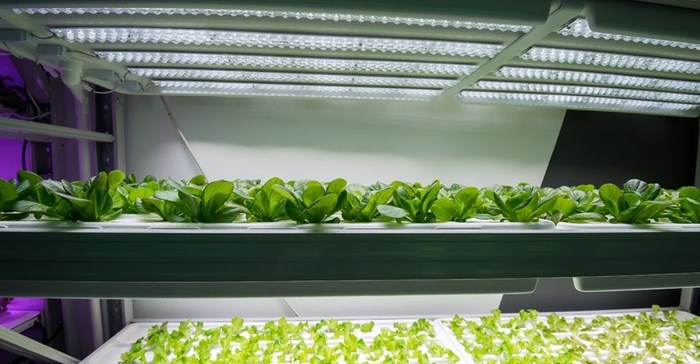The evolution of technology is transforming the world. Digital technologies such as the Internet of Things (IoT), advanced machinery and artificial intelligence are changing the way people work, making processes more efficient and helping to create innovative new products and services. The digital transformation of the agricultural sector will impact billions of people, impacting every part of the production and distribution of food supply - and Africa should be no exception.

Mark McCallum, CTO, Orange Business Services
With roughly 33% of global food production for human consumption lost or wasted every year, and global food demand set to increase by 35 percent by 2030, how will the digital transformation of agriculture transform life on the farm? What impact will this have on a world in which around 40 percent of the population work in agriculture.
The Department of Agriculture, Forestry, and Fishing Q4 (2015) report states: In monetary terms, agriculture’s share of the South African economy has long been outstripped by those of the secondary and tertiary industries such as banking and finance, education, health and other sectors over the past years. Agriculture now accounts for less than 3% of GDP. According to the General Household Survey, carried out by Stats SA (2016), less than one-fifth of South African households (16,9%) were involved in agricultural production activities in 2015. Of these, 11,8% cultivated farmland while 91,3% created backyard gardens. Only 12,1% of the households involved in agriculture reported getting agricultural-related support from the government. Nationally, 2,1% of the households reported receiving training and 6,8% received dipping/livestock vaccination services.
However, it is a common phenomenon that as other sectors grow as a result of economic development, the contribution of agriculture declines. Agriculture remains a vital sector in the economy through the provision of employment, foreign exchange, and raw materials. It also stimulates growth in the rest of the economy through its forward and backward linkages with other economic sectors.
Agricultural transformation in South Africa will build social cohesion, drive beneficial continental trade, provide a platform for sustainable exports to the rest of the world, and, most importantly, help create millions of jobs while pulling subsistence farmers out of poverty.
The food you eat
Digital transformation is freeing farmers from their fields and disrupting local economies and long-established working methods. Using smartphones, tablets or conventional computers, connected M2M agricultural solutions provide farmers with real efficiencies, such as remote measurement of soil condition, equipment, livestock and crop monitoring.
Fisheries are also changing. The UN has developed solar powered technological platforms to support fish preservation facilities and modern fish processing technologies, while smart solutions for animal husbandry are also making a difference, such as General Alert’s livestock monitoring systems.
Orange Business Services and Dutch firm Dacom are working to offer smart farming technology to farmers. Sensors situated quite literally “in the field” connect to smartphone apps that let agriculturalists access all kinds of essential information about their crops from wherever they happen to be.
Small-scale farmers also benefit from new efficiencies - over 9 out of 10 farms are family farms and such farms, between them, provide over 80 percent of global food supply – and digital transformation is helping them enable efficient crop production at scale while also helping smallholders feed themselves more efficiently.
The harvest revolution
In Japan, a strawberry-picking robot is replacing agricultural jobs while indoor farm operator, Spread, plans to open a fully automated lettuce farm near Kyoto in 2017. “Environmental benefits from robots will be indirect for the most part,” said Sara Olson, Lux Research analyst. “Steering and spraying automation systems mean fewer over-sprays and less waste, for a lower total chemical load on a field. Most automation systems provide some degree of increased efficiency, meaning reduced waste, which in some cases will be an environmental benefit.”

Scientists at The Genome Analysis Centre (TGAC) and the John Innes Centre (JIC) are developing a Raspberry Pi-based crop monitoring solution for precision agriculture that enables them to automate the capturing of crop growth and quantification of drought adaptation and color changes during the growing season. This affordable solution should prevent future crop losses due to drought, pestilence, or disease. This matters – right now up to 16 percent of global crop production is lost to pests.
Digging deep for data
Data management is critical and digital transformation means all new detectors, such as in-field sensors, drones, and connected machinery, making data analysis part of the agribusiness toolkit. This is nurturing a bumper harvest for farm management software, predicting this will become a $4b market by 2022, according to Research & Markets.
Analytics may yield good insight into likely future crop patterns, enabling farmers to more effectively plan their crops and make farming a more precise exercise. As stakeholders in national government, NGOs, distribution and retail link into this information, there is potential improvement in management and supply.
Smart distribution
“Demand is increasing for technologies that can track product and production information and share it across regions and throughout the value chain,” states a recent Research and Markets report.
“If just one-fourth of the food currently lost or wasted globally could be saved, it would be enough to feed 870 million hungry people in the world,” notes the UN Food and Agriculture Organization. Consumers in developed countries waste almost as much food (222 million tons) as the entire net food production of sub-Saharan Africa (230 million tons), claims the UN.
Smart distribution and retail management can help here. From highly automated shipping and distribution systems such as London Gateway, to the automated remotely controlled agricultural systems used worldwide today. Connected packaging should help track product more effectively across the supply chain, enabling better stock management and delivering efficiencies across the distribution chain.
Technological transformation
“In order to feed over 2.5b more people and prevent widespread famine in the next few decades, it is estimated that food production will need to increase by 70 percent by 2050,” says GSMA. Technology innovation increases crop yield: improvements in fertiliser, machinery, crop protection and farming methods have all significantly increased production capabilities across the last 100 years, explained BASF Crop Protection’s Elmar Groiss.
While existing fixed broadband infrastructure is lacking in many rural communities, it seems likely mobile broadband will be part of the future of farming in South Africa. Digital technologies may enable food industry tries to address the challenges of globalisation and meet growing consumer demand for new, exotic and out-of-season food.












































